If you live in or close to a city, you’ll know how much energy our society wastes by shining light into the night sky.
This is known as light pollution and it drastically affects our view of deep-sky objects, making things like nebulae virtually invisible through a telescope.
Thankfully, there is help at hand for astronomers in the form of light pollution filters.
These can partially compensate for the obliterating orange glow of light pollution by improving contrast.

What types of light pollution filter are there?
Light pollution can be tackled using two different filter types: broadband light pollution filters and an ultra high contrast or narrowband OIII filter.
Broadband light pollution filters attenuate the wavelengths of light associated with older mercury vapour and low pressure sodium lighting.
Available from Orion, Baader and Sky-Watcher, these do an excellent job at improving contrast, although they all dim the overall view.
Luckily this is not such a problem for lunar and planetary observation as the objects are already very bright.
Another approach is to increase the contrast of objects you wish to observe by selecting the specific wavelengths you want to focus on.
An ultra high contrast or narrowband OIII filter can be very effective on emission objects like nebulae.
Below we've tested a selection of light pollution filters that will help you get more out of your observing if you life close to the bright lights of towns and cities.
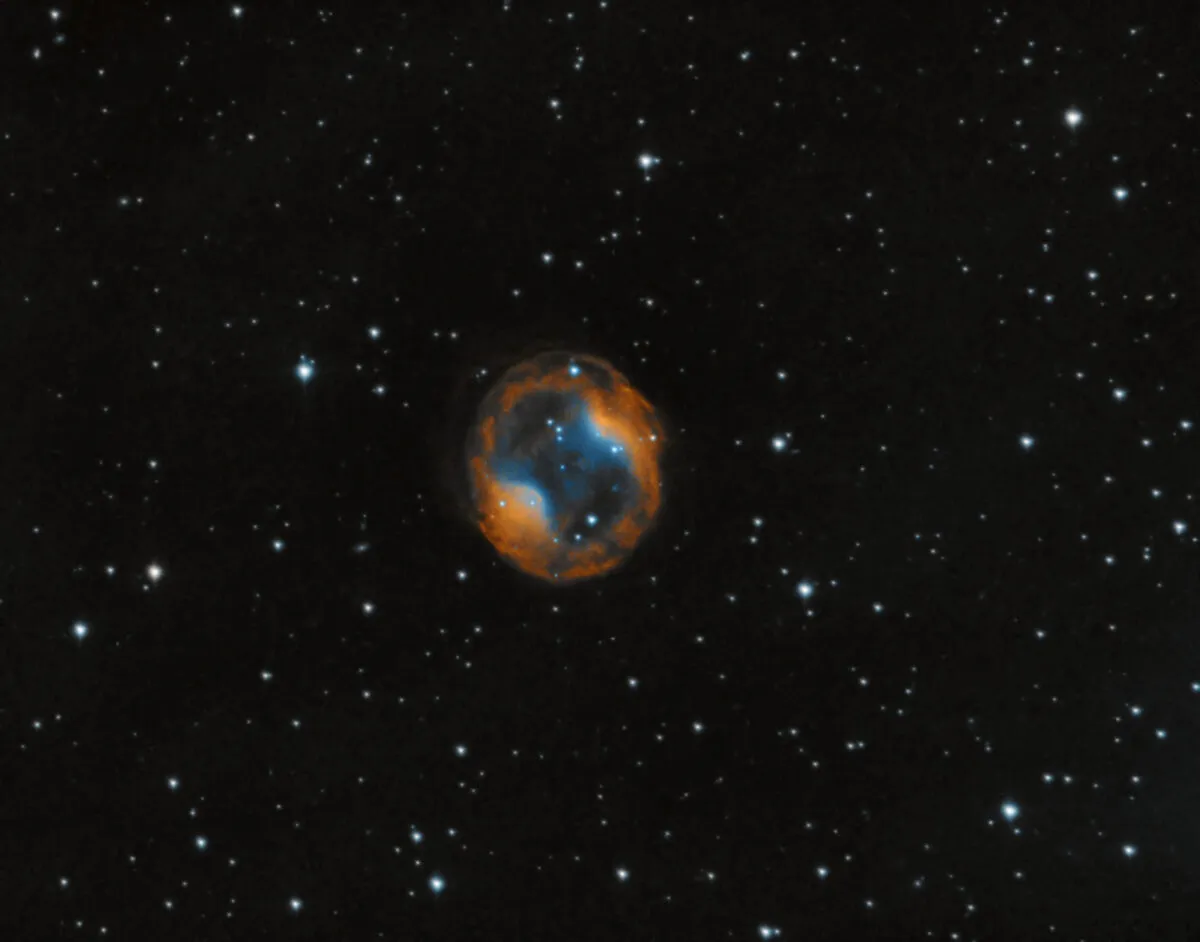
How we tested our light pollution filters
We carried out our tests of light pollution filters by observing the Orion Nebula in an area with bad light pollution caused by a nearby industrial estate.
After screwing the light pollution filters into the backs of 1.25-inch fit 26mm and 10mm eyepieces, we used them with a 3-inch ED refractor and a 10-inch Newtonian reflector.
We then looked at how well they suppressed the background glow of the light pollution and how adept they were at bringing out a selection of deep-sky objects.
6 of the best light pollution filters
Sky-Watcher UHC Filter
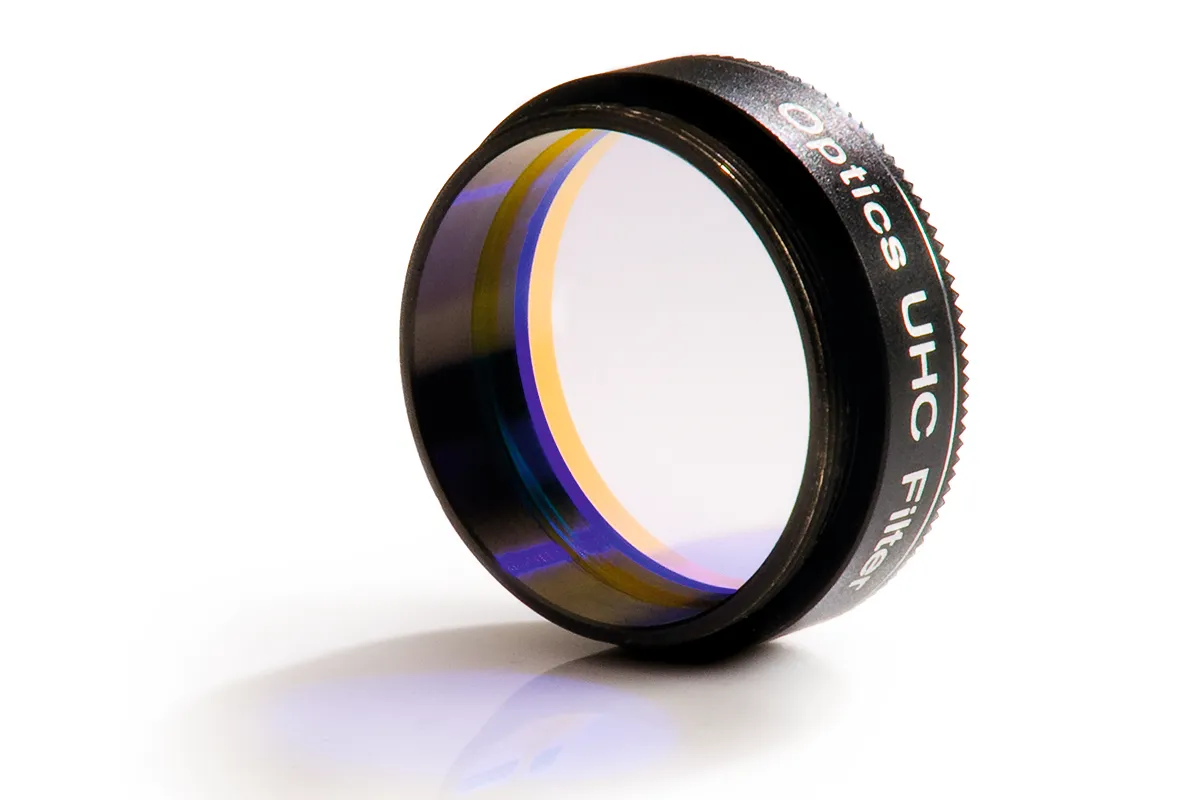
This filter performs quite well considering its low price, and during our testing we found it produced a good, dark background sky and we were able to observe a reasonable amount of nebulosity in the Orion Nebula.
A blue-green tint is evident in the field of view and the stars appeared slightly dimmer than they did with, for example, the Baader filter we’ve reviewed further down in this article, but we could still see M43, even using the 10mm eyepiece. To sum up, this filter performed well at reducing the effects of light pollution.
Lumicon UHC Filter
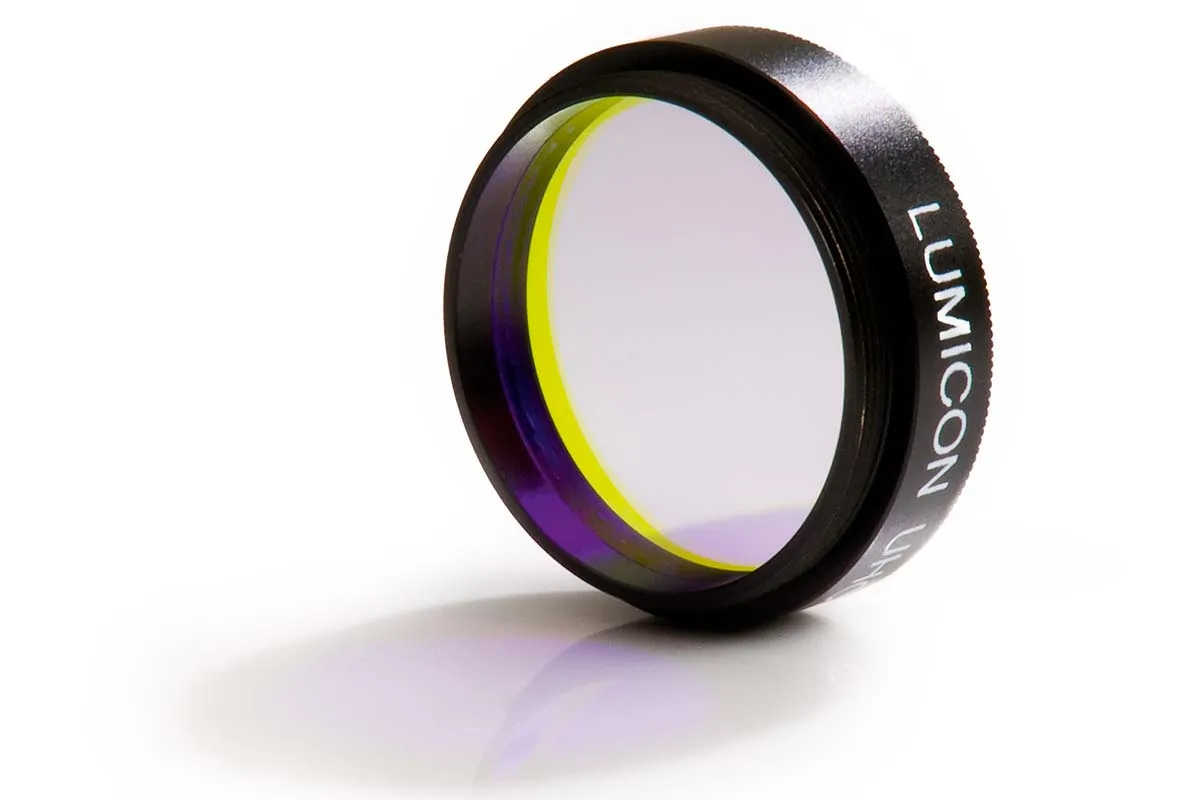
Lumicon’s UHC Filter gives a strong hint of blue-green colouration to the overall view. However, this is worth it for the extra detail we could see in the Orion Nebula with both the 26mm and 10mm eyepieces.
The filter produces a dark background, yet still shows M43 (part of the Orion Nebula) slightly better than the rest. Even the view of the open star cluster M41 below the star Sirius seemed to be improved, with the stars now standing out better against the background sky.
Orion UltraBlock Narrowband Filter
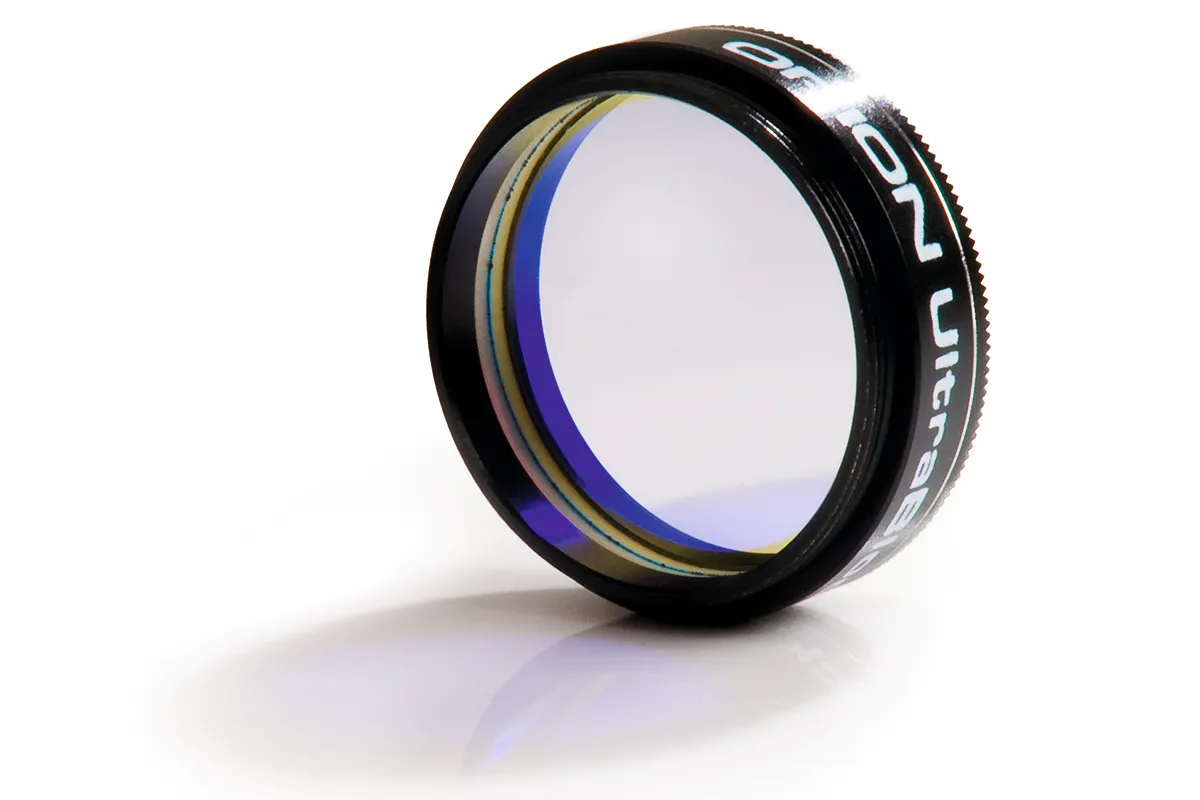
The Orion UltraBlock Narrowband filter dims the view of all objects slightly, just like the rest on test, but it manages to retain more of the Orion Nebula and brings out detail in M43, part of the Orion Nebula complex. It gives a good dark background with a characteristic blue-green hue, but stars still stand out well.
Even star clusters benefit in heavily light polluted areas. This is a very good filter that does a sterling job of freeing nebulae from the clutches of light pollution.
Baader UHC-S L-Booster Filter
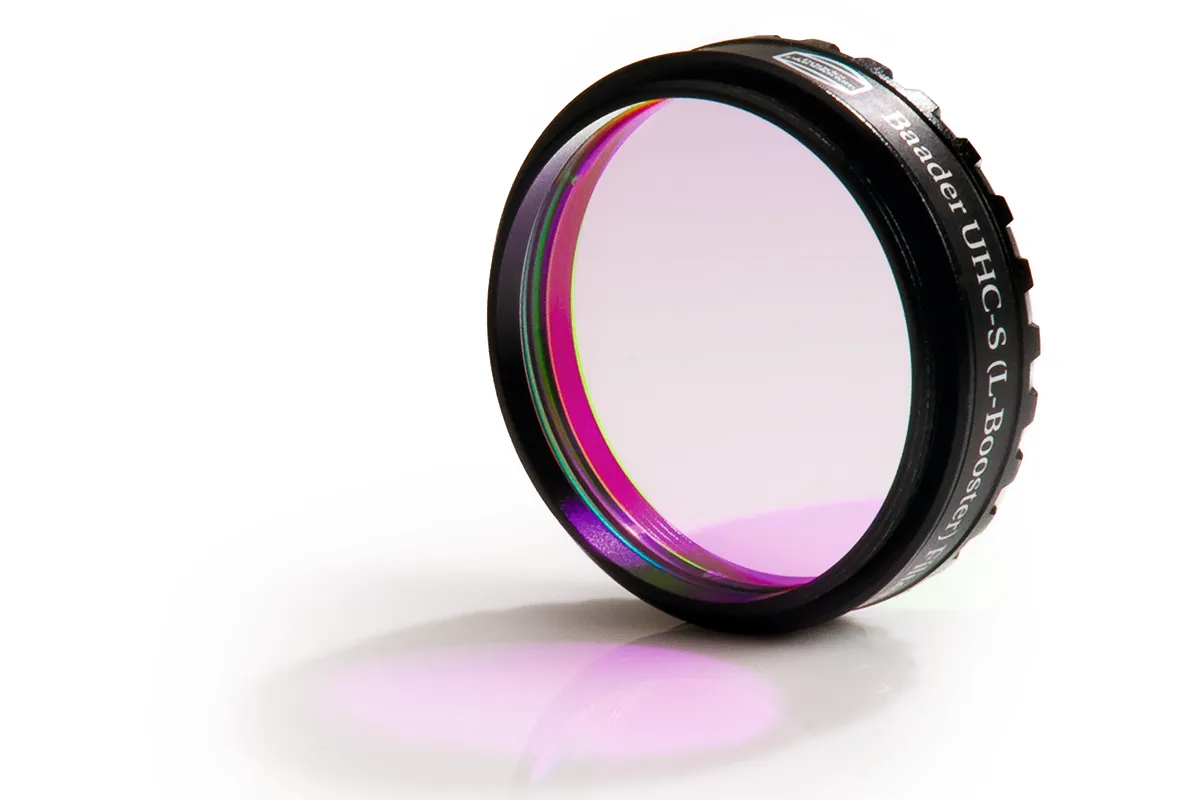
This Baader light pollution filter gives a slight hint of red to the blue-green tint that is normally seen in this type of filter, while the background sky isn’t quite as dark when compared with the EHC filter we’ve reviewed further down in our list.
However, this particular filter still allows a good amount of detail to be seen in nebulae and it also produces slightly brighter stars. We also noted that the faint nebulosity around M43 was easy to see, so dim deep-sky objects benefit from this filter.
Burgess Optical Broadband Nebula Filter
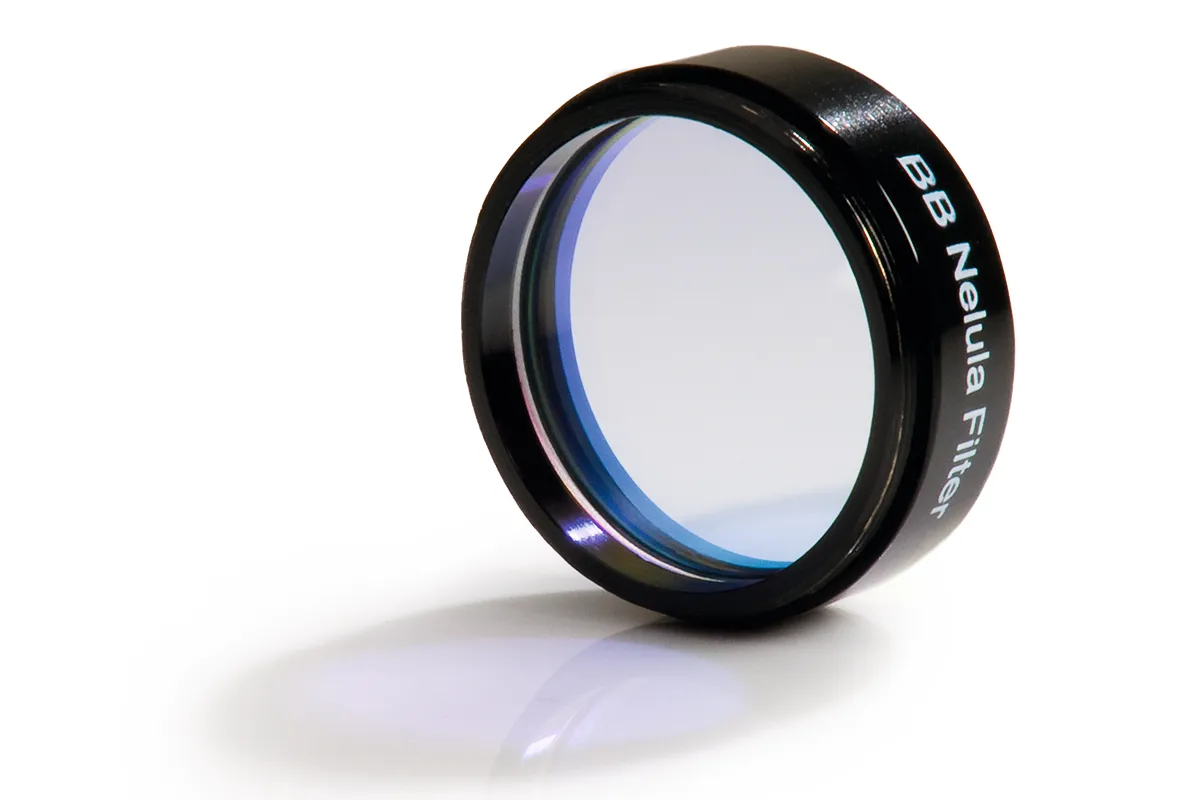
Despite being the cheapest model we tested during our exploration of the best light pollution filters, the Burgess Optical Broadband Nebula Filter still manages to give reasonable views of the Orion Nebula. The background sky isn’t quite as dark as we would have liked, but the green-blue hint is also not as overpowering as colours in the other filters.
M43 is just visible with the 10mm eyepiece, but we didn’t feel that it could reveal as much of the nebula as some of the other filters on test. However, it does a reasonable job for the price.
Orion Optics EHC Photo Visual Filter
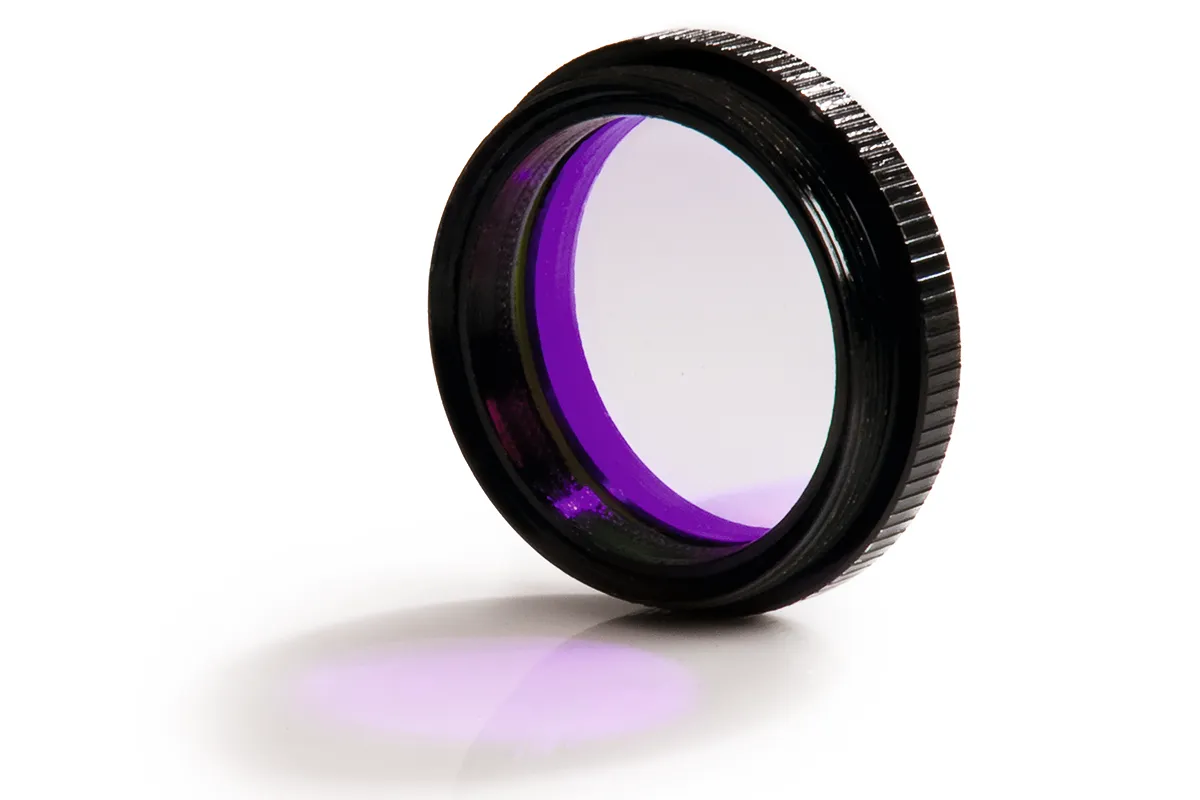
Orion Optics’s EHC filter has the lowest profile of the filters in this series of reviews. It reduces the background glow significantly, but it also dims the view slightly, especially with nebulous objects.
However, while the outskirts of the Orion Nebula suffered, it brought out the brighter main section with the 26mm eyepiece, and detail was still evident using the 10mm eyepiece. Our test showed that the filter clearly helped curtail the effects of orange glow.
